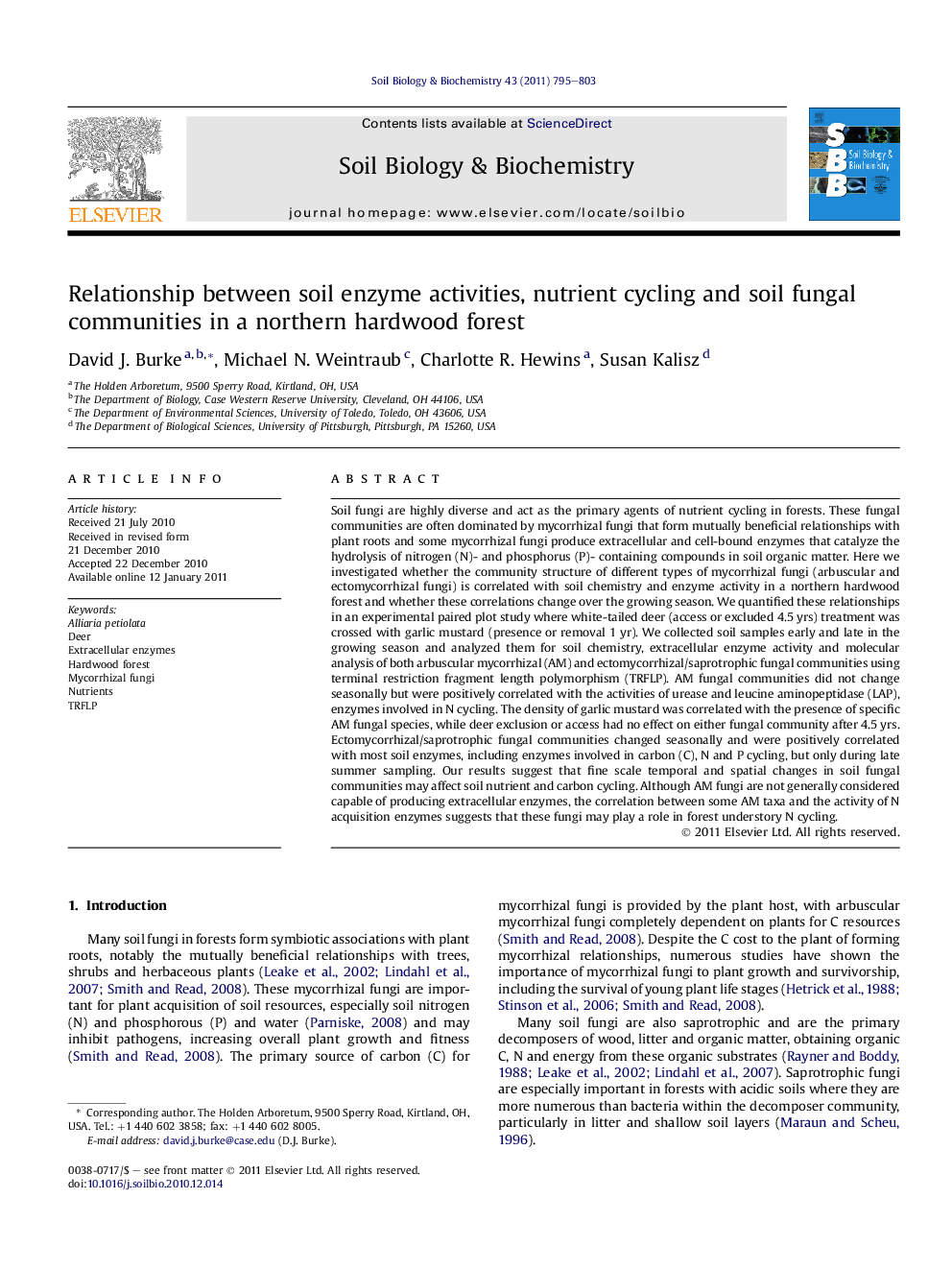| کد مقاله | کد نشریه | سال انتشار | مقاله انگلیسی | نسخه تمام متن |
|---|---|---|---|---|
| 2025458 | 1069997 | 2011 | 9 صفحه PDF | دانلود رایگان |

Soil fungi are highly diverse and act as the primary agents of nutrient cycling in forests. These fungal communities are often dominated by mycorrhizal fungi that form mutually beneficial relationships with plant roots and some mycorrhizal fungi produce extracellular and cell-bound enzymes that catalyze the hydrolysis of nitrogen (N)- and phosphorus (P)- containing compounds in soil organic matter. Here we investigated whether the community structure of different types of mycorrhizal fungi (arbuscular and ectomycorrhizal fungi) is correlated with soil chemistry and enzyme activity in a northern hardwood forest and whether these correlations change over the growing season. We quantified these relationships in an experimental paired plot study where white-tailed deer (access or excluded 4.5 yrs) treatment was crossed with garlic mustard (presence or removal 1 yr). We collected soil samples early and late in the growing season and analyzed them for soil chemistry, extracellular enzyme activity and molecular analysis of both arbuscular mycorrhizal (AM) and ectomycorrhizal/saprotrophic fungal communities using terminal restriction fragment length polymorphism (TRFLP). AM fungal communities did not change seasonally but were positively correlated with the activities of urease and leucine aminopeptidase (LAP), enzymes involved in N cycling. The density of garlic mustard was correlated with the presence of specific AM fungal species, while deer exclusion or access had no effect on either fungal community after 4.5 yrs. Ectomycorrhizal/saprotrophic fungal communities changed seasonally and were positively correlated with most soil enzymes, including enzymes involved in carbon (C), N and P cycling, but only during late summer sampling. Our results suggest that fine scale temporal and spatial changes in soil fungal communities may affect soil nutrient and carbon cycling. Although AM fungi are not generally considered capable of producing extracellular enzymes, the correlation between some AM taxa and the activity of N acquisition enzymes suggests that these fungi may play a role in forest understory N cycling.
Research highlights
► AM fungi were stable over time and correlated with urease and LAP activity.
► ECM/saprotrophic fungi changed between early and late summer sampling.
► ECM/saprotrophic fungi were positively correlated with most soil enzymes.
► Excluding deer for 4 years did not affect soil fungi.
► AM fungi were significantly correlated with the density of garlic mustard adults.
Journal: Soil Biology and Biochemistry - Volume 43, Issue 4, April 2011, Pages 795–803